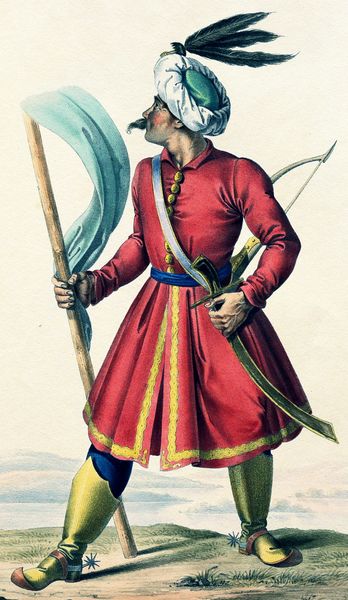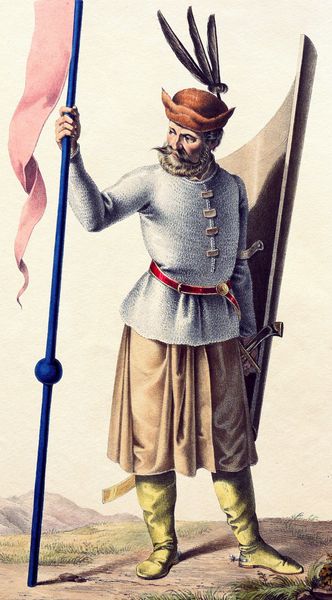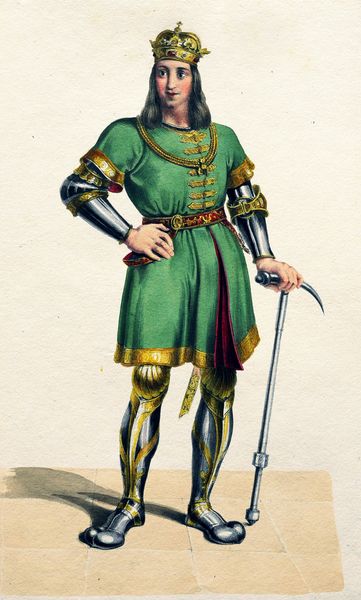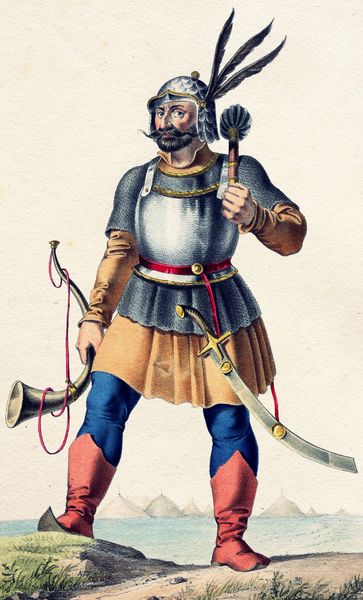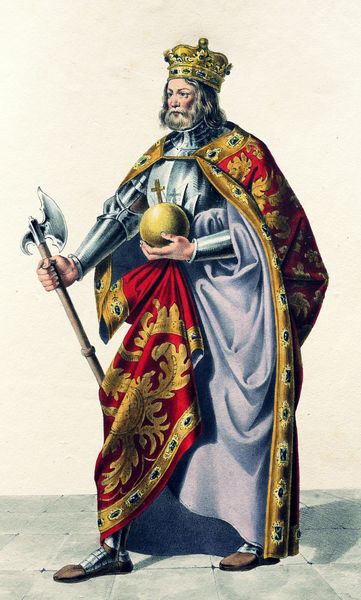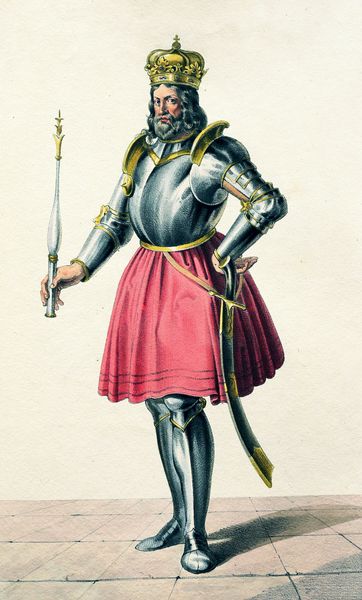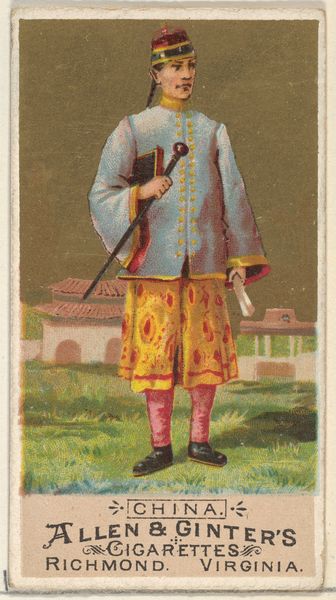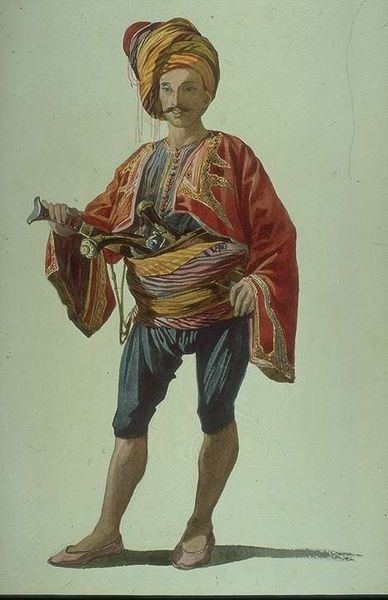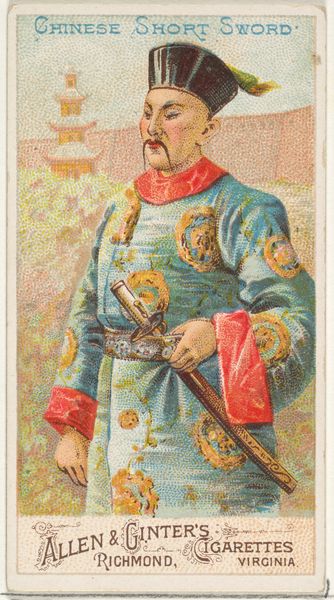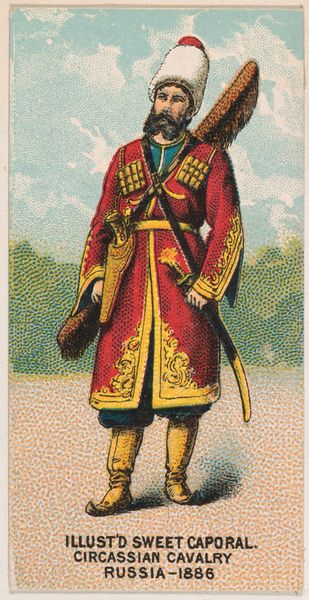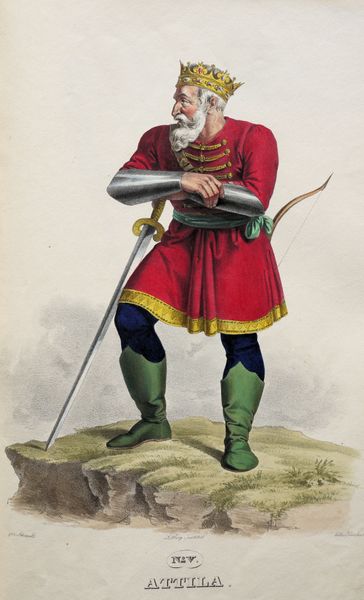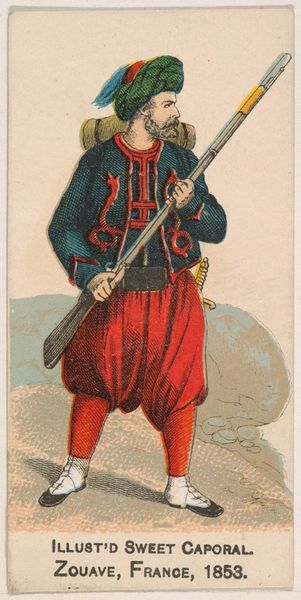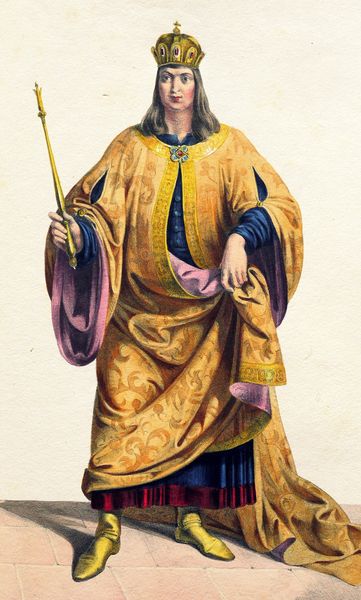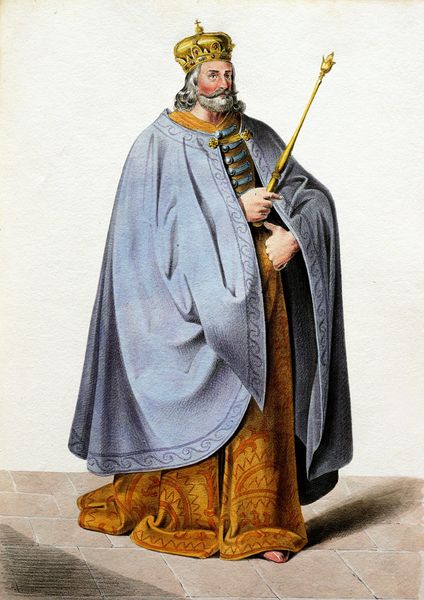
lithograph
#
portrait
#
character portrait
#
lithograph
#
portrait reference
#
romanticism
#
history-painting
#
portrait art
#
fine art portrait
Copyright: Public domain
Editor: Here we have a lithograph from 1828 by Josef Kriehuber, titled "Buda, legendary Hungarian military leader, namesake of Budapest." The rendering is quite vibrant, even for its age, and he’s certainly got presence. I wonder, what’s your take on this piece? Curator: As a materialist, I find the lithographic process fascinating. Think about the labour involved: the grinding of the stone, the preparation of the inks, the hand-printing of each individual image. Each stage implicates both artist and artisan. Editor: That’s a point. I suppose I hadn't really considered how much work goes into just creating the image itself! How does that context influence the image of Buda as presented here? Curator: This wasn't mass-produced like later photogravures. Consider also how colour was added to this print – presumably by hand? And then think about why – who would have been commissioning or buying prints like these? What would his carefully delineated clothing signify to them about trade networks and available material culture? The artist meticulously depicted specific textures and embellishments of fabrics and metals... what does this emphasis on detail reveal? Editor: You're right, it really brings the materiality of the image itself to the forefront. I suppose it emphasizes the role that objects played in defining status, even legend. Curator: Exactly! The print isn't just an image, it's an artifact of 19th-century commerce and culture, influencing how Buda was both consumed and remembered. What new questions about the production of historical memory does this raise? Editor: Well, this has made me think about how the materials and methods used to create art can completely alter my perception and understanding of its subject!
Comments
No comments
Be the first to comment and join the conversation on the ultimate creative platform.
